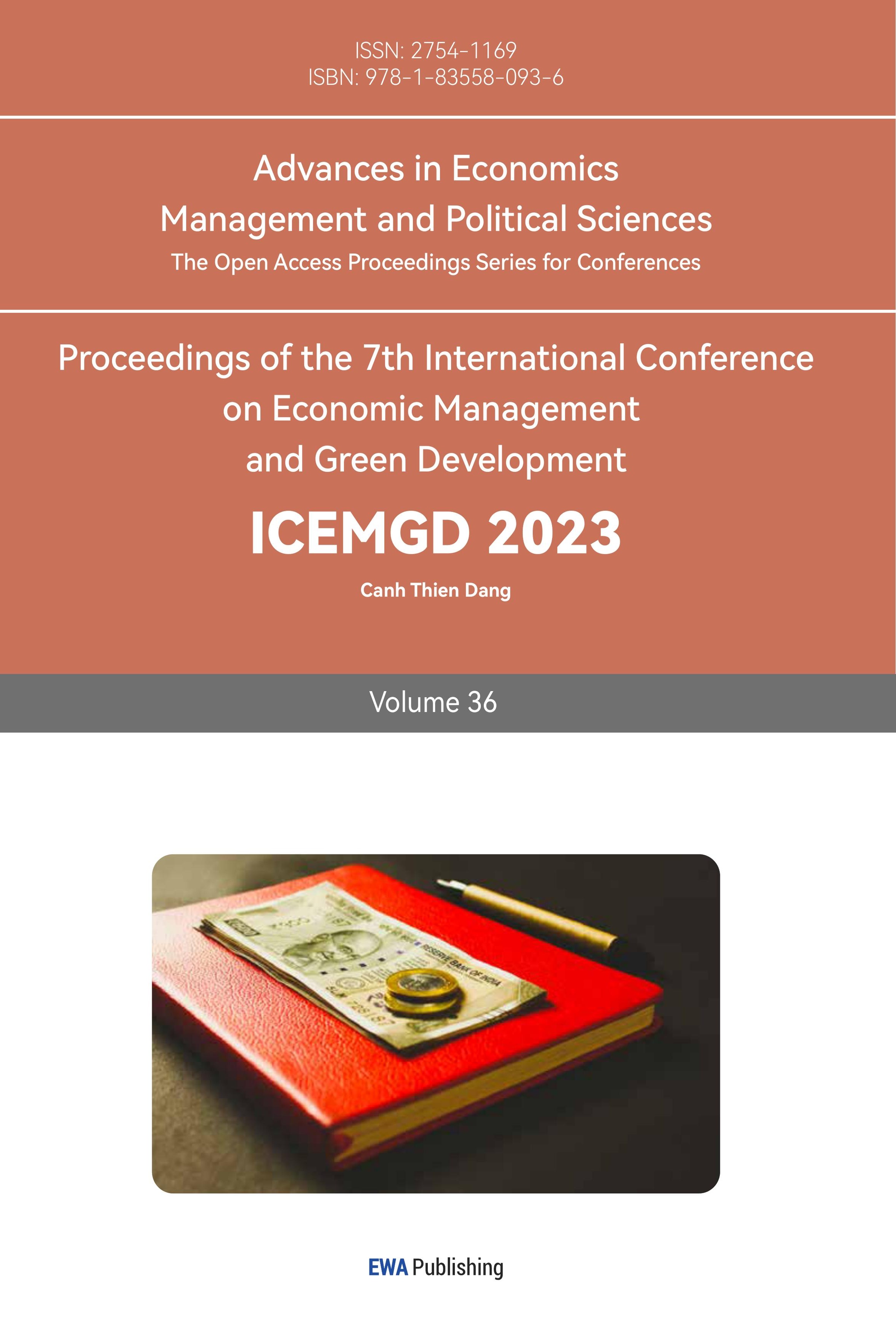References
[1]. Zhou Hui. Starbucks in China development present situation and the marketing strategy study. Journal of modern business, 2019.
[2]. SHI JING.Starbucks focuses energy on lower tier regions[N]. China Daily, 2023.
[3]. Feng Suhang. Starbucks brand relationship marketing research [D]. Hunan normal university, 2020.
[4]. Wu Xiaomei, Lu Chenyue. Gamified Marketing and its Impact on Corporate Financial Performance: A Case study of Starbucks China [J]. Journal of Putian University,2022.
[5]. Qin Suxiang, Chen Canyue, Zhou Yanping. Analysis of wechat public account marketing strategy under OTO background A Case study of Starbucks [J]. Inner Mongolia Science and Technology and Economy,2022.
[6]. Li Zaiying. Starbucks' service marketing strategy optimization in lanzhou research [D]. Lanzhou university, 2022.
[7]. ChenLu.Beijingstarbuckscoffeeco.,LTD.Marketingstrategyresearch[D].Zhengzhouuniversity,2020.
[8]. Shi Yishao, Yang Fenglong. The spatial distribution characteristics and influencing factors of Starbucks coffee shops in Shanghai [J]. Economic Geography,2018
[9]. Li Weimin, Ding Yinan. Market status and development trend of imported coffee [J]. Modern Food,2018.
[10]. Chen Shu. Analysis of Chinese Coffee Industry Chain and Its Development Strategy [D]. Hainan University,2013.
Cite this article
Li,D.;Sun,B.;Zhou,S. (2023). Analysis on the Development Strategy of Starbucks' Layout in Third and Fourth Tier Cities in China. Advances in Economics, Management and Political Sciences,36,121-130.
Data availability
The datasets used and/or analyzed during the current study will be available from the authors upon reasonable request.
Disclaimer/Publisher's Note
The statements, opinions and data contained in all publications are solely those of the individual author(s) and contributor(s) and not of EWA Publishing and/or the editor(s). EWA Publishing and/or the editor(s) disclaim responsibility for any injury to people or property resulting from any ideas, methods, instructions or products referred to in the content.
About volume
Volume title: Proceedings of the 7th International Conference on Economic Management and Green Development
© 2024 by the author(s). Licensee EWA Publishing, Oxford, UK. This article is an open access article distributed under the terms and
conditions of the Creative Commons Attribution (CC BY) license. Authors who
publish this series agree to the following terms:
1. Authors retain copyright and grant the series right of first publication with the work simultaneously licensed under a Creative Commons
Attribution License that allows others to share the work with an acknowledgment of the work's authorship and initial publication in this
series.
2. Authors are able to enter into separate, additional contractual arrangements for the non-exclusive distribution of the series's published
version of the work (e.g., post it to an institutional repository or publish it in a book), with an acknowledgment of its initial
publication in this series.
3. Authors are permitted and encouraged to post their work online (e.g., in institutional repositories or on their website) prior to and
during the submission process, as it can lead to productive exchanges, as well as earlier and greater citation of published work (See
Open access policy for details).
References
[1]. Zhou Hui. Starbucks in China development present situation and the marketing strategy study. Journal of modern business, 2019.
[2]. SHI JING.Starbucks focuses energy on lower tier regions[N]. China Daily, 2023.
[3]. Feng Suhang. Starbucks brand relationship marketing research [D]. Hunan normal university, 2020.
[4]. Wu Xiaomei, Lu Chenyue. Gamified Marketing and its Impact on Corporate Financial Performance: A Case study of Starbucks China [J]. Journal of Putian University,2022.
[5]. Qin Suxiang, Chen Canyue, Zhou Yanping. Analysis of wechat public account marketing strategy under OTO background A Case study of Starbucks [J]. Inner Mongolia Science and Technology and Economy,2022.
[6]. Li Zaiying. Starbucks' service marketing strategy optimization in lanzhou research [D]. Lanzhou university, 2022.
[7]. ChenLu.Beijingstarbuckscoffeeco.,LTD.Marketingstrategyresearch[D].Zhengzhouuniversity,2020.
[8]. Shi Yishao, Yang Fenglong. The spatial distribution characteristics and influencing factors of Starbucks coffee shops in Shanghai [J]. Economic Geography,2018
[9]. Li Weimin, Ding Yinan. Market status and development trend of imported coffee [J]. Modern Food,2018.
[10]. Chen Shu. Analysis of Chinese Coffee Industry Chain and Its Development Strategy [D]. Hainan University,2013.









